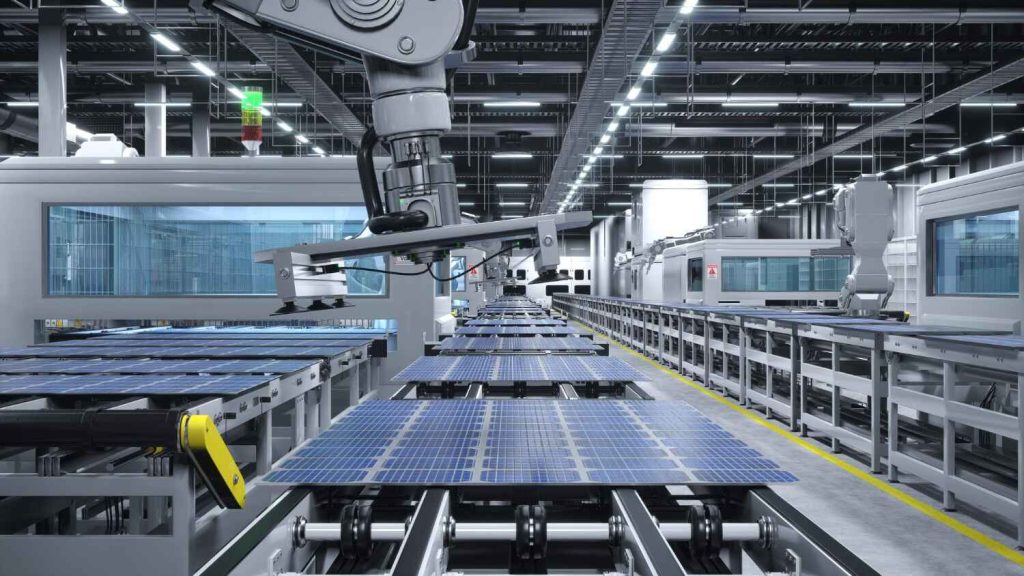As the world accelerates towards a sustainable energy future, blockchain technology is emerging as a game-changer in the solar energy sector. Known primarily for its role in powering cryptocurrencies like Bitcoin, blockchain offers numerous applications beyond digital currencies, including its use in solar panels and renewable energy systems. At Redington Solar, we’re excited about the innovative ways blockchain is transforming the solar industry. Here’s a closer look at how blockchain technology is being integrated into solar panels and the significant benefits it brings.
What is Blockchain Technology?
Blockchain technology is a decentralized, digital ledger that records transactions across a network of computers in a secure and immutable way. Each block in the chain contains a list of transactions, and once added, the data cannot be altered or removed without consensus from the network. This feature ensures transparency, security, and trustworthiness, making blockchain a powerful tool for various applications, including solar energy.
Applications of Blockchain in Solar Panels
- Enhanced Energy Trading
Another great application of blockchain technology in solar panels is in peer-to-peer (P2P) energy trading. Blockchain allows homeowners with solar power to sell power to their neighbors or other consumers through P2P platforms. This system does away with the need for middlemen, cuts down on the costs of the transaction, and is a better way of trading renewable energy. These transactions are executed by smart contracts which are self-executing contracts whose terms are coded into the contract.
- Transparency and Security of Energy Transactions
Blockchain technology increases the efficiency and reliability of energy transactions. Every transaction is documented on the blockchain, which makes it easy to track the generation and usage of energy. It assists in checking the sources of renewable energy, as well as checking on fraudsters and ensuring that the energy they are selling is indeed green. It also offers the consumer and the regulators accurate information that may be used for auditing and compliance.
- Improved Grid Management
Blockchain can help to improve grid management by providing real-time information on supply and demand. In blockchain, the energy producers can record their contribution of energy and the grid operators can manage the grid’s operations in a better way. This integration aids in the management of renewable energy, minimization of losses, and the overall stability of the grid.
- Facilitating Microgrid Operations
Microgrids are small-scale power systems that can either be connected to or disconnected from the main utility grid. Blockchain technology can help in the management of microgrids since it can be used to control energy transactions, schedule the distribution of energy, and monitor performance. This capability is especially useful for communities and organizations that require localized renewable energy systems to increase control and effectiveness.
5. Enhancing Renewable Energy Certificates (RECs)
Renewable Energy Certificates (RECs) are tradable credits that represent proof of renewable energy generation. Blockchain technology can improve the management and tracking of RECs, ensuring that they are issued, traded, and retired transparently and securely. This ensures that the renewable energy claims are legitimate and helps foster trust among buyers and sellers in the market.
Benefits of Blockchain in Solar Panels
- Increased Efficiency: By reducing the need for intermediaries and automating transactions through smart contracts, blockchain technology enhances the efficiency of energy trading and grid management.
- Enhanced Security: The decentralized and immutable nature of blockchain ensures secure and transparent transactions, reducing the risk of fraud and data tampering.
- Cost Savings: Eliminating intermediaries and streamlining transactions leads to lower transaction costs and increased profitability for solar energy producers.
- Greater Accessibility: Blockchain technology enables more individuals and communities to participate in the renewable energy market, promoting wider adoption of solar energy.
Challenges and Considerations
Despite its promising applications, blockchain technology in solar panels also faces challenges:
- Scalability: Blockchain networks can face scalability issues as the volume of transactions grows, impacting their efficiency and speed.
- Integration Complexity: Implementing blockchain technology requires integration with existing energy systems and infrastructure, which can be complex and costly.
- Regulatory and Legal Issues: The regulatory landscape for blockchain and energy trading is still evolving, and compliance with legal requirements is crucial for successful implementation.
Conclusion
Blockchain technology is revolutionizing the solar energy sector by enhancing energy trading, improving grid management, and ensuring transparency and security in renewable energy transactions. At Redington Solar, we are excited about the potential of blockchain to drive innovation and efficiency in solar panels and renewable energy systems. As technology advances and adoption grows, blockchain’s role in the solar industry will continue to expand, paving the way for a more transparent, efficient, and sustainable energy future.





